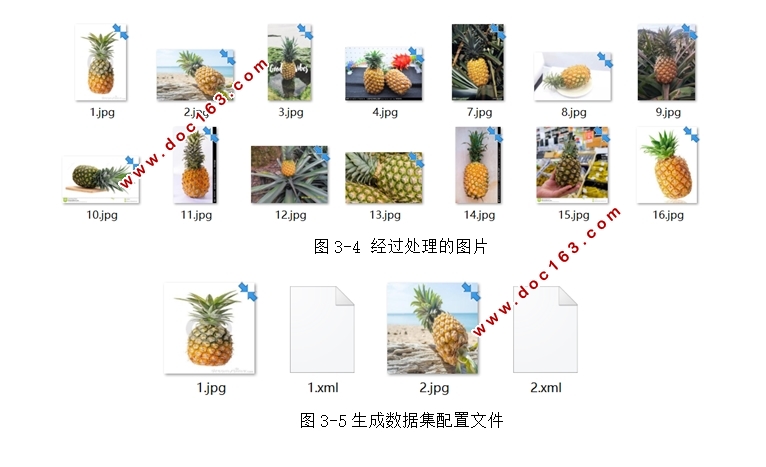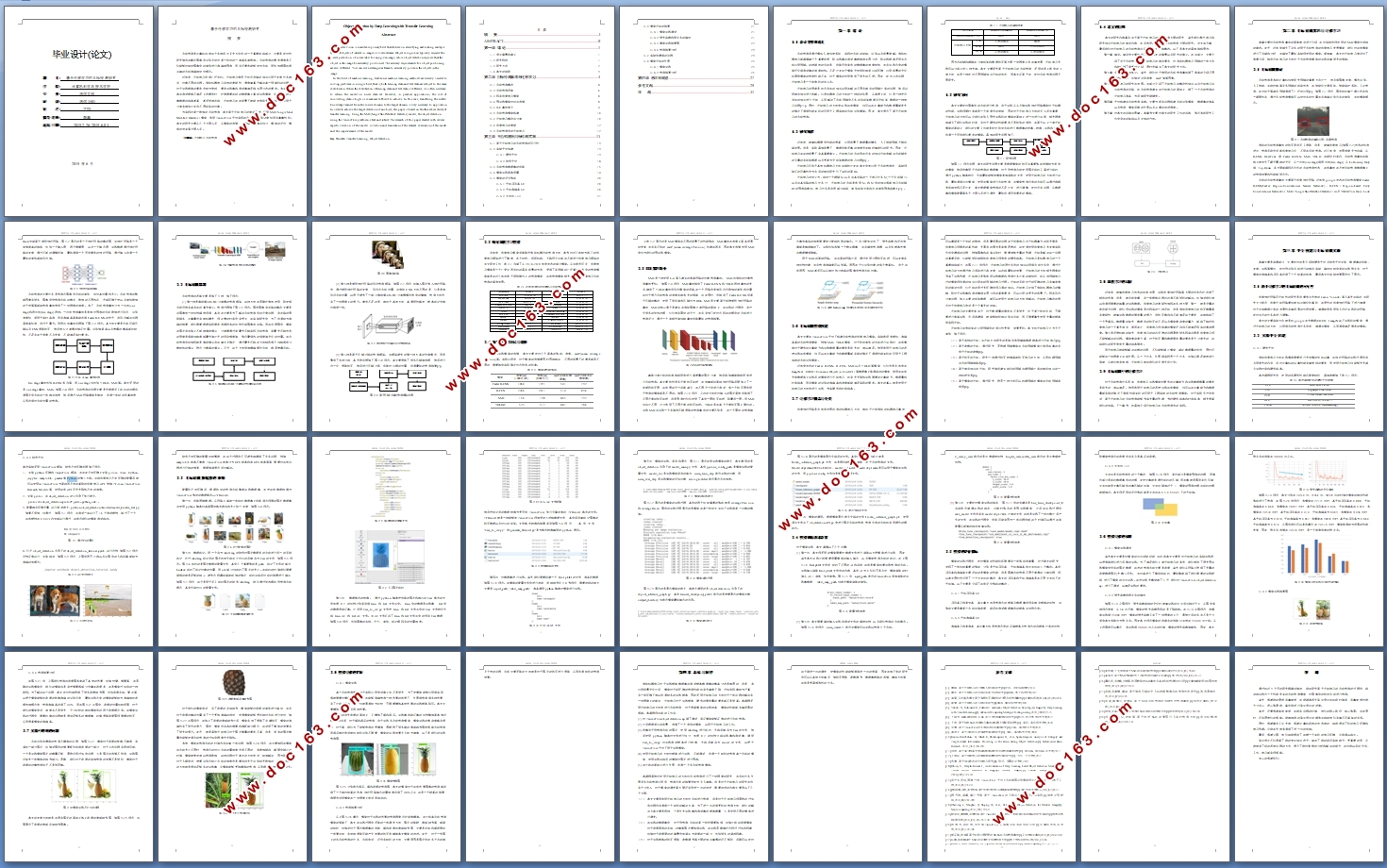基于迁移学习的目标检测研究(Spyder,Python)

基于迁移学习的目标检测研究(Spyder,Python)(任务书,开题报告,外文翻译,论文14500字,程序代码)
摘 要
目标检测是计算机视觉这个多学科交叉大方向中的一个重要组成部分,主要是针对性研究如何在静态图像中识别及定位某一特定的一类或多类物体。目标检测的要求通常是不仅能够对给定图像中的类别进行准确地预测,而且还要求能够定位目标,用矩形框图将感兴趣的目标准确地定位框出。
近年来,迁移学习收到广泛关注。迁移学习常用于将已存储的知识应用于处理任务相关,对象不同的问题。传统机器学习有他的局限性,通常着重于解决单一领域内的问题,对于训练样本的要求也较为苛刻,要求训练集和测试集满足独立同分布的要求。当训练样本与测试样本不满足上述要求时,经常需要在新的数据集上重新训练模型,由此带来的采集数据的成本甚高,甚至很难达成,迁移学习在此场景下就能发挥巨大的作用,它可用于分类有相似之处但不同标签的对象。
为实现对某一物体的目标检测,本文基于迁移学习的理论研究,利用SSD(Single Shot Mutibox Detector)模型,利用TensorFlow平台实现的目标检测识别速度快而且鲁棒性好。本文的研究主要从几个方面入手,从模型的选择,数据集的收集与划分,模型的评价,模型的改良等方面入手。
[资料来源:https://www.doc163.com]
关键词:迁移学习 目标检测
Object Detection by Deep Learning with Transfer Learning
Abstract
Computer vision is a multidisciplinary field that focuses on identifying and locating multiple types of objects of interest in images or video streams. Object recognition typically requires the correct prediction of a class label for any given image, while object detection requires that the object in the image be accurately positioned. The accuracy requirements for object positioning are also different. You can use a rectangular frame to accurately position the objects in the image.
In the field of machine learning, traditional machine learning methods are usually limited to solving problems in a single field, that is, both training data and test data are subject to the same distribution. When the distribution of training data and test data is different, it is often necessary to retrain the model on a new data set. However, in practical applications, the cost of re-collecting data is high or sometimes difficult to achieve. In this case, transfering the useful knowledge learned from the source domain to the target domain is very necessary to application.
In order to achieve the target detection of an object, this paper is based on the theoretical study of transfer learning. Using the SSD (Single Shot Mutibox Detector) model, the object detection using the TensorFlow platform is fast and robust.The research of this paper started with several aspects:selection of the model,collection and translation of the dataset,evaluation of this model and the improvement of this model.
Key Words: Transfer Learning; Object Detection
[资料来源:http://www.doc163.com]




目 录
摘 要 I
ABSTRACT II [资料来源:https://www.doc163.com]
第一章 绪 论 1
1.1 设计背景和意义 1
1.2 研究现状 1
1.3 研究方向 2
1.4 本文的组织 3
第二章 目标检测算法与迁移学习 4
2.1 目标检测概述 4
2.2 目标检测思路 6
2.3 现有深度学习模型 8
2.4 预训练模型对比与选择 8
2.5 SSD算法简介 9
2.6 目标检测模型构建 10
2.7 迁移学习概念与分类 10
2.8 深度学习的局限 12
2.9 目标检测中的迁移学习 12
第三章 平台构建与目标检测实施 13
3.1 基于迁移学习的目标检测的可行性 13
3.2 实验平台搭建 13
3.2.1 硬件平台 13
3.2.2 软件平台 14
3.3 目标检测数据集的获取 15
3.4 模型训练基本设置 19
3.5 模型的评价指标 20
3.5.1 平均召回率AR 20
3.5.2 平均准确率AR 20
3.5.2 交并比IoU 21
3.6 模型迁移的结果 21
3.6.1模型训练调试 21
3.6.2损失函数和停止点的确定 21
3.6.3模型训练结果图 22
3.6.4 检测结果分析 23
3.7 实验中遇到的问题 23
3.8 模型迁移的扩展 25
3.8.1 模型训练 25
3.8.2 检测结果分析 25
第四章 总结与展望 27
参考文献 29
致 谢 31
[资料来源:www.doc163.com]
上一篇:基于fasttext算法的文本分类设计与实现(Python)
下一篇:没有了
